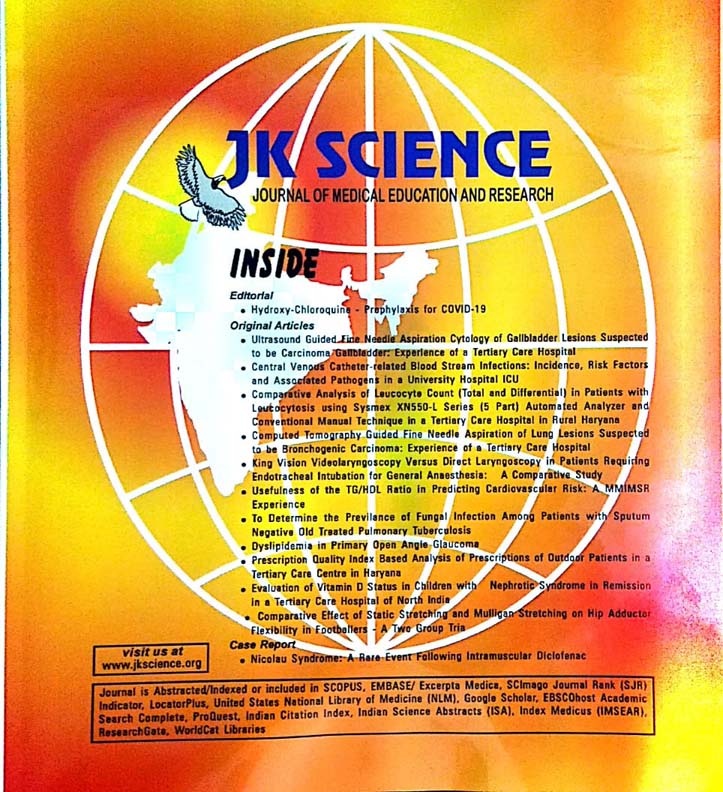Five-Year Retrospective Study on the Management of Vesicovaginal Fistula from a Tertiary Care Centre of Jammu
Keywords:
Vesicovaginal fistula, Management, Obstructed labour, Developing countriesAbstract
Introduction: Vesicovaginal fistula is defined as an abnormal communication between the bladder and the vagina, resulting in continuous involuntary discharge of urine into the vaginal vault. In developing countries, the predominant cause of VVF is prolonged obstructed labour leading to tissue ischemia.
Aim: We aimed to carry out a retrospective study to find out the presentation and management of VVF at our centre over a period of 5 years.
Material and Methods: It is a retrospective study carried out over a period of 5 years in which all the patients presenting to our centre with VVF were included. All the patients with final diagnosis of VVF were reviewed and only those cases where complete record was available were included.
Results: A total of 39 female patients were included in the study. 24 patients had a history of difficult vaginal delivery, 11 patients had undergone abdominal hysterectomy, 2 patients had history of unsuccessful VVF repair, 1 patient with documented placenta accreta had undergone caesarean section with hysterectomy and 1 patient had a post-irradiation fistula. 21 patients had a simple fistula while 18 had complex fistulae. Transabdominal approach for the repair of VVF was used in 25 cases while transvaginal route of VVF repair was used in 12 cases. The overall success rate for VVF repair was 100% in our study.
Conclusion: In our study, the high success rate of VVF repair can be attributed to proper evaluation of patient; preoperative cystoscopy for deciding correct approach of surgery; proper excision of fistulous tract; adequate mobilisation of bladder and vagina; interposition of well vascularised flaps in between bladder and vagina; good surgeon expertise and vigilant post-operative management.
Downloads
Downloads
Published
How to Cite
Issue
Section
License
Copyright (c) 2021 JK Science: Journal of Medical Education & Research

This work is licensed under a Creative Commons Attribution-NonCommercial-ShareAlike 4.0 International License.





